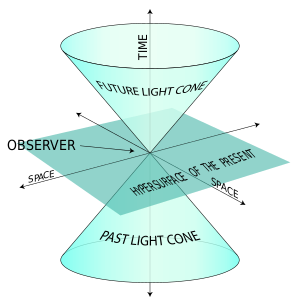Special Theory Of Relativity Study Guide
INTRODUCTION
Have you ever wondered how time works in space? To find out the unknown, Albert Einstein proposed the Special Theory of Relativity. In Einstein’s theory of special relativity, he determined that the laws of physics work the same for all non-accelerating particles. He also showed that the speed of light is the same everywhere, be it in a vacuum or the speed at which the particle is moving. Let us learn more about the Special Theory of Relativity!
DEFINITION OF THE SPECIAL THEORY OF RELATIVITY
-
Special Theory of Relativity is defined as the reliance of different physical phenomena on the relative motion of the observer and the observed particles, especially with the nature and behavior of light, time-space, and mass.
-
It indicates the consequences of mass-energy equivalence, length contraction, universal speed limit, and relativity of simultaneity. The notion of having an absolute universal time is replaced with time dependent on the spatial position and reference frame.
-
Special Theory of Relativity equation can be displayed as
E = mc2
Where, E = energym = massc = speed of lightPOSTULATES OF SPECIAL THEORY OF RELATIVITY
The Special Theory of Relativity has two postulates. They are as follows:
- Principle of Relativity – All the laws of physics work the same way in all inertial frames of reference.
- The speed of light in a given vacuum is the same (3.0 x108 m/s) in all inertial reference frames regardless of the motion of the observer or source.
CONSEQUENCES OF SPECIAL RELATIVITY
- There is no such thing as absolute length or absolute time in relativity.
- A time interval (or length) dimension depends on the reference frame in which it is made.
DIFFERENCE BETWEEN THE GENERAL AND SPECIAL THEORIES OF RELATIVITY
SUMMARY
- The special theory of relativity examples is Gold’s yellow color, the properties exhibited by both magnets and electromagnets, etc.
- The special theory is relativity, also known as STR theory.
- There is no absolute time in space; it can be observed concerning the reference frame.
FAQs
Q. Who developed the special theory of relativity?
Albert Einstein developed the special theory of relativity.
Q. State Einstein’s equation, which shows energy and mass are interchangeable. What is Einstein’s postulate on the special theory of relativity?
Einstein’s equation: E = mc2
The two postulates are:
- The laws of physics are constant.
- Irrespective of the source of light, the speed of light is the same in every medium, be it vacuum or space.
Q. What is a simple explanation of the theory of relativity?
Special Theory of Relativity, meaning the relationship between mass, time, and space.
We hope you enjoyed studying this lesson and learned something cool about the Special Theory of Relativity! Join our Discord community to get any questions you may have answered and to engage with other students just like you! We promise, it makes studying much more fun!😎
SOURCES
- Einstein’s Theory of Special Relativity: https://www.space.com/36273-theory-special-relativity.html. Accessed 19th April 2022.
- Special Relativity: https://www.britannica.com/science/special-relativity Accessed 19th April 2022.
- Theory of Relativity in Real Life: https://www.livescience.com/58245-theory-of-relativity-in-real-life.htmlAccessed 19th April 2022.


